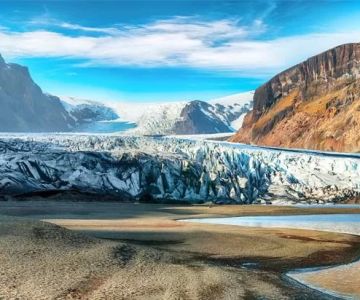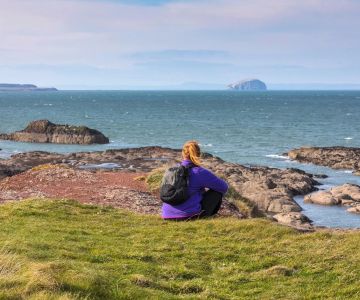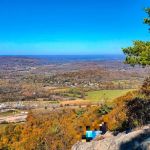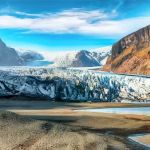Visiting Mount Fuji in Japan – A Complete Travel Guide to Hiking and Exploring Mount Fuji
- 1. Why Visit Mount Fuji?
- 2. Best Time to Visit Mount Fuji
- 3. Hiking Mount Fuji – Tips and Recommendations
- 4. Sightseeing Around Mount Fuji
- 5. My Personal Experience at Mount Fuji
- 6. How to Plan Your Trip to Mount Fuji
1. Why Visit Mount Fuji?
Mount Fuji, Japan's highest peak, is one of the most iconic and revered natural landmarks in the world. Whether you’re an outdoor enthusiast, a photography lover, or someone who simply wants to experience Japan's natural beauty, a visit to Mount Fuji is an unforgettable adventure. Known for its symmetrical slopes and stunning views, Mount Fuji is not only a revered symbol of Japan but also a UNESCO World Heritage site.
The mountain is popular for both its cultural significance and its recreational opportunities. Whether you're interested in hiking, sightseeing, or simply enjoying the breathtaking views, Mount Fuji offers something for everyone. It’s a destination where nature, culture, and adventure come together in perfect harmony.
2. Best Time to Visit Mount Fuji
The best time to visit Mount Fuji depends largely on what you want to experience. If you’re planning to hike to the summit, the official climbing season runs from early July to early September. During this period, the mountain’s climbing routes are open, and the weather conditions are the most favorable for reaching the top.
For those who prefer sightseeing rather than hiking, visiting in the spring (March to May) or autumn (September to November) is ideal. During these seasons, Mount Fuji’s surroundings are at their most beautiful – cherry blossoms in spring and vibrant autumn foliage provide stunning backdrops for photographs. Winter can also be a great time to visit for those who enjoy snow-covered landscapes, but it’s important to note that temperatures can drop drastically, and hiking is not recommended at this time of year.
3. Hiking Mount Fuji – Tips and Recommendations
Hiking Mount Fuji is a dream for many adventurers, but it requires preparation. The climb is challenging, especially for those unfamiliar with high-altitude trekking. Here are some tips and recommendations for hiking Mount Fuji:
1. Choose the Right Trail
There are several trails to choose from when hiking Mount Fuji, each offering different levels of difficulty. The Yoshida Trail is the most popular and accessible trail, starting from the fifth station. It’s a good option for first-time hikers, as it offers facilities along the way. Other trails, like the Subashiri and Gotemba Trails, offer a more serene experience but are more challenging.
2. Prepare for the Altitude
At nearly 3,776 meters (12,389 feet), Mount Fuji’s altitude can cause altitude sickness for some hikers. Make sure to take it slow and acclimate if possible. Staying hydrated and getting enough rest during the climb is essential for preventing altitude sickness.
3. Pack the Right Gear
Proper gear is crucial for a successful climb. Bring comfortable hiking boots, warm clothing (even in summer), a rain jacket, and plenty of water and snacks. Many climbers also recommend trekking poles for added stability, especially near the summit where the terrain becomes steeper and more challenging.
4. Hire a Guide
If you're unsure about hiking on your own or want a more informative experience, consider hiring a local guide. Guides can provide valuable insights into the mountain’s history, culture, and natural environment, enhancing your experience.
4. Sightseeing Around Mount Fuji
While the climb to Mount Fuji’s summit is a highlight of any trip, the surrounding areas also offer stunning sights and activities that are worth exploring. Here are some top sightseeing opportunities near Mount Fuji:
1. Fuji Five Lakes (Fujigoko)
The Fuji Five Lakes are located at the base of Mount Fuji and offer spectacular views of the mountain, especially during sunrise and sunset. You can enjoy activities such as boating, fishing, hiking, or simply taking in the natural beauty of the area. The lakes also offer hot springs, which are perfect for relaxing after a day of exploring.
2. Chureito Pagoda
For one of the best views of Mount Fuji, head to the Chureito Pagoda in the Arakura Sengen Shrine. The pagoda provides a perfect vantage point for photographing Mount Fuji, especially with the pagoda in the foreground, framed by cherry blossoms in spring or vibrant autumn leaves.
3. Hakone
Located a short distance from Mount Fuji, Hakone is famous for its hot springs, scenic views, and outdoor activities. The area is known for its stunning views of the mountain, especially from Lake Ashi, where you can enjoy a boat cruise with Mount Fuji in the background.
5. My Personal Experience at Mount Fuji
During my trip to Japan, visiting Mount Fuji was a highlight of my journey. I decided to climb the Yoshida Trail, which was challenging but incredibly rewarding. As I ascended, I could feel the altitude affecting my breath, but the stunning views of the surrounding valleys and lakes kept me motivated. Reaching the summit and watching the sunrise over the clouds was an unforgettable moment that made all the effort worthwhile.
After the climb, I spent some time around the Fuji Five Lakes, enjoying peaceful walks around Lake Kawaguchi and taking photos of the mountain reflected in the water. I also visited the Chureito Pagoda for a stunning panoramic view of Mount Fuji. The whole experience was magical, and I highly recommend it to anyone visiting Japan.
6. How to Plan Your Trip to Mount Fuji
Planning your trip to Mount Fuji involves several steps to ensure that your visit is both enjoyable and safe. Here’s how to get started:
- Decide on Your Hiking Dates: Plan your hiking trip between July and September for the official climbing season, or choose a sightseeing trip in the spring or autumn for beautiful views and milder weather.
- Book Accommodation Early: There are many hotels and lodges near Mount Fuji, especially in areas like Kawaguchiko and Hakone. Booking early is essential during peak seasons.
- Get the Right Gear: Ensure you have the proper gear, including sturdy hiking boots, warm clothing, and plenty of water. Consider renting gear from local stores if you don't have everything you need.
- Consider a Guided Tour: For a more informative and comfortable experience, consider booking a guided tour that includes transportation, meals, and expert guides who can enhance your adventure.
Ready to experience the awe-inspiring Mount Fuji? Click here to explore tours and start planning your trip to Mount Fuji today!







 Coney Island Boardwalk Garden4.0 (75 reviews)
Coney Island Boardwalk Garden4.0 (75 reviews) The William Hotel Midtown, Sonder4.0 (555 reviews)
The William Hotel Midtown, Sonder4.0 (555 reviews) Shepard Lake Recreation Area0.0 (0 reviews)
Shepard Lake Recreation Area0.0 (0 reviews) Stairway To Heaven4.0 (185 reviews)
Stairway To Heaven4.0 (185 reviews) Howard Bennett Playground4.0 (152 reviews)
Howard Bennett Playground4.0 (152 reviews) Isle of Meadows4.0 (10 reviews)
Isle of Meadows4.0 (10 reviews) Top Group Travel Destinations in Europe: Best Places for Group Vacations
Top Group Travel Destinations in Europe: Best Places for Group Vacations Best Travel Clans for Sustainable Travel
Best Travel Clans for Sustainable Travel How to Get Involved in Travel Clans for Social Travel: Explore Group Travel Opportunities
How to Get Involved in Travel Clans for Social Travel: Explore Group Travel Opportunities Best Group Vacation Destinations for Friends: Ultimate Travel Ideas
Best Group Vacation Destinations for Friends: Ultimate Travel Ideas Travel Clans for Solo Travelers Looking for Company: Join Unique Travel Communities
Travel Clans for Solo Travelers Looking for Company: Join Unique Travel Communities Best Travel Clans for Women Traveling Together
Best Travel Clans for Women Traveling Together